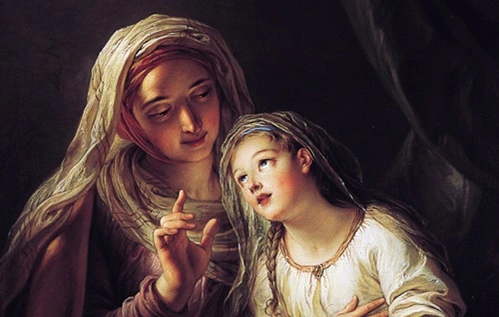The Amish and Mormon communities are two distinct religious groups with roots in Christianity. Although they share some similarities, such as their emphasis on community, family, and faith, they differ significantly in beliefs, practices, lifestyles, and historical backgrounds. Understanding these differences offers insight into their unique ways of life and spiritual traditions.
This article explores the difference between Amish and Mormon, examining their origins, doctrines, cultural practices, and more.
Who Are the Amish?

The Amish, also known as the Old Order Amish, are a Christian group that originated in Switzerland in the late 17th century. They emerged as a splinter group from the Mennonites, led by Jakob Ammann, who advocated for a stricter interpretation of the Bible and greater separation from the modern world.
Key Characteristics of the Amish:
- Faith and Beliefs: The Amish emphasize simplicity, humility, and strict adherence to biblical teachings. They reject modern conveniences to avoid worldly temptations.
- Community: Amish life is highly communal, focusing on collective well-being and mutual aid.
- Language: Many Amish communities speak Pennsylvania Dutch, a dialect of German, alongside English.
- Technology: The Amish avoid modern technology such as electricity, automobiles, and the internet, which they see as distractions from their faith.
- Education: Amish children typically attend school until the 8th grade, focusing on practical skills needed for their agrarian lifestyle.
Who Are the Mormons?
The Mormons, formally known as members of the Church of Jesus Christ of Latter-day Saints (LDS Church), are a Christian denomination founded in the United States in the early 19th century. The religion was established by Joseph Smith in 1830 and is centered on the teachings of the Book of Mormon, which Mormons consider another testament of Jesus Christ.
Key Characteristics of the Mormons:
- Faith and Beliefs: Mormons believe in the Bible and the Book of Mormon as scripture. They emphasize personal revelation, missionary work, and family values.
- Community: Mormons are organized into congregations called wards, with a global structure that promotes service and outreach.
- Language: The primary language is English, but the LDS Church operates in many languages worldwide.
- Technology: Mormons generally embrace modern technology and use it for communication, education, and evangelism.
- Education: Education is highly valued, and many Mormons pursue higher education. The church operates Brigham Young University (BYU) and other institutions.
Key Differences Between Amish and Mormon
| Aspect | Amish | Mormon |
|---|---|---|
| Origin | Originated in 17th-century Switzerland as a branch of Anabaptism. | Originated in 19th-century America, founded by Joseph Smith. |
| Scripture | The Bible (primarily the New Testament). | The Bible and the Book of Mormon. |
| Lifestyle | Simple, with rejection of modern technology. | Modern, embracing technology for work and worship. |
| Community Structure | Small, rural communities with communal living. | Organized into wards and stakes, with global outreach. |
| Missionary Work | Rarely engage in evangelism. | Actively engage in missionary work worldwide. |
| Clothing | Plain, homemade clothing in muted colors. | Wear modern clothing, with modesty guidelines. |
| Education | Limited to 8th grade, focused on practical skills. | Encourages higher education, with church-operated universities. |
| Technology | Avoids electricity, cars, and the internet. | Embraces modern technology and media. |
| Population | Approximately 350,000 globally. | Over 16 million members worldwide. |
1. Religious Beliefs
Amish
- The Amish follow a literal interpretation of the Bible, focusing on humility, simplicity, and obedience to God’s will.
- They avoid evangelism, believing their actions and way of life serve as a testament to their faith.
- They emphasize the concept of Gelassenheit, which translates to submission or yielding to God’s will and the community.
Mormons
- Mormons believe in the Bible as well as the Book of Mormon, which they consider a companion to the Bible and a record of God’s dealings with ancient inhabitants of the Americas.
- They also follow modern revelations received by prophets, with the President of the LDS Church acting as a living prophet.
- Salvation and eternal progression are central themes in Mormon theology, which teaches that families can be together forever.
2. Lifestyle and Community
Amish
- Amish communities are rural and agrarian, focusing on farming and manual labor. They prioritize self-sufficiency and communal cooperation.
- Modern conveniences such as electricity, cars, and telephones are generally avoided. This separation helps maintain their simple lifestyle and keeps worldly influences at bay.
- Social life revolves around church gatherings and community events like barn raisings.
Mormons
- Mormons live in modern communities, integrating fully with society while adhering to religious values.
- Technology is embraced and used extensively for communication, family history research, and missionary work.
- The church’s welfare program and humanitarian efforts focus on community service and global outreach.
3. Education
Amish
- Amish children attend small, local schools run by the community, where they learn basic literacy, arithmetic, and practical skills.
- Formal education ends at the 8th grade, with the focus shifting to apprenticeships and work on family farms or businesses.
Mormons
- Education is highly valued, with an emphasis on academic achievement and lifelong learning.
- Many Mormons attend church-operated institutions like Brigham Young University (BYU).
- The LDS Church encourages studying both secular and spiritual knowledge.
4. Worship Practices
Amish
- Amish worship services are held in members’ homes or barns, not in church buildings.
- Services are simple and include scripture reading, hymns, and sermons. The focus is on community and humility rather than elaborate rituals.
Mormons
- Mormons worship in church buildings and temples. Weekly meetings in churches include sacrament services (similar to communion) and lessons for children, youth, and adults.
- Temple worship involves sacred ordinances like marriage sealings and baptisms for the dead, reflecting their belief in eternal family connections.
5. Use of Technology
Amish
- The Amish avoid most forms of modern technology, including electricity, cars, and the internet. This practice stems from their desire to remain separate from worldly influences and maintain a simple life.
- Some exceptions exist, such as limited use of phones or generators for business purposes, but these are carefully regulated.
Mormons
- Mormons actively embrace technology, using it for education, communication, and missionary work.
- The church encourages the use of social media and online platforms for sharing faith and connecting with others.
- Family history research, an important aspect of Mormon belief, is often conducted using modern genealogy tools.
6. Clothing
Amish
- The Amish adhere to a strict dress code, wearing plain, homemade clothing in muted colors. This reflects their commitment to humility and simplicity.
- Men wear broad-brimmed hats, suspenders, and simple shirts, while women wear long dresses, aprons, and bonnets.
Mormons
- Mormons wear modern clothing but follow guidelines for modesty, avoiding revealing or flashy attire.
- Special garments, known as temple garments, are worn under regular clothing by adult members who have participated in temple ordinances.
7. Evangelism and Growth
Amish
- The Amish do not actively seek converts, as their focus is on maintaining their traditions and community.
- Growth occurs primarily through large family sizes and the retention of community members.
Mormons
- Mormons are well-known for their missionary efforts. Young men and women, as well as older couples, often serve missions worldwide to share their faith.
- The LDS Church is one of the fastest-growing Christian denominations due to its emphasis on outreach and evangelism.
8. Population and Global Presence
Amish
- The Amish population is relatively small, with approximately 350,000 members concentrated in rural areas of the United States, particularly in Pennsylvania, Ohio, and Indiana.
Mormons
- The Mormon population exceeds 16 million members worldwide, with a significant presence in the United States, South America, Africa, and Asia.
- The church operates in over 160 countries and provides humanitarian aid globally.
Conclusion
While both Amish and Mormon communities share a foundation in Christian values and emphasize strong family ties, their approaches to faith, lifestyle, and engagement with the modern world are fundamentally different. The Amish prioritize simplicity, humility, and separation from the modern world, maintaining a rural, technology-free existence. In contrast, the Mormons embrace modernity, emphasizing education, global outreach, and a structured organizational system.
Understanding the difference between Amish and Mormon highlights the diversity within Christianity and the unique ways these groups navigate their spiritual paths in a changing world. Both traditions offer valuable insights into the relationship between faith, culture, and community.



